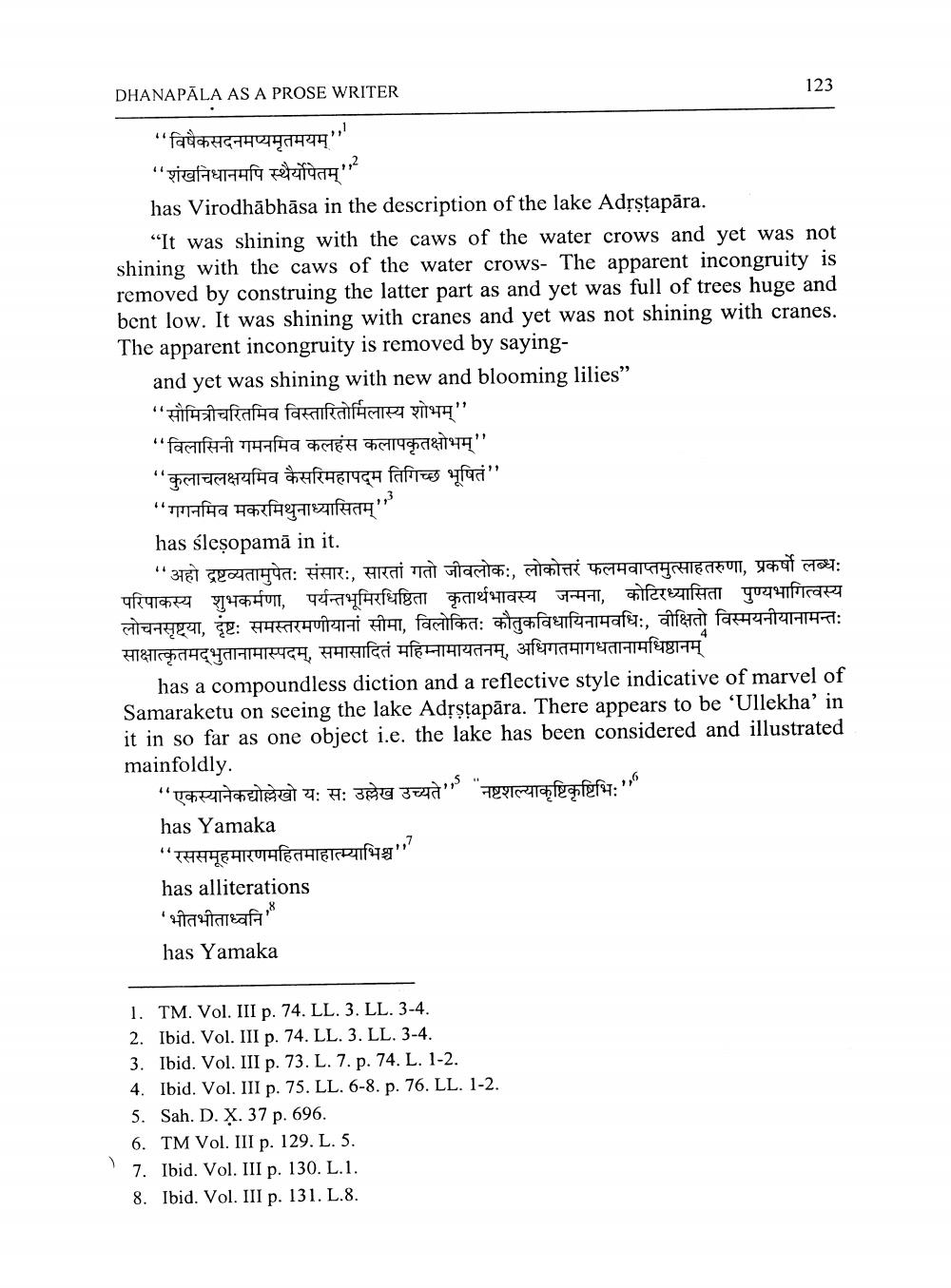________________
DHANAPĀLA AS A PROSE WRITER
123
"विषैकसदनमप्यमृतमयम्" "शंखनिधानमपि स्थैर्योपेतम्"" has Virodhābhāsa in the description of the lake Adrstapāra.
“It was shining with the caws of the water crows and yet was not shining with the caws of the water crows- The apparent incongruity is removed by construing the latter part as and yet was full of trees huge and bent low. It was shining with cranes and yet was not shining with cranes. The apparent incongruity is removed by saying
and yet was shining with new and blooming lilies” "सौमित्रीचरितमिव विस्तारितोर्मिलास्य शोभम्" "विलासिनी गमनमिव कलहंस कलापकृतक्षोभम्" "कुलाचलक्षयमिव कैसरिमहापद्म तिगिच्छ भूषितं" "गगनमिव मकरमिथुनाध्यासितम्" has ślesopamā in it.
"अहो द्रष्टव्यतामुपेतः संसारः, सारतां गतो जीवलोकः, लोकोत्तरं फलमवाप्तमुत्साहतरुणा, प्रकर्षो लब्धः परिपाकस्य शुभकर्मणा, पर्यन्तभूमिरधिष्ठिता कृतार्थभावस्य जन्मना, कोटिरध्यासिता पुण्यभागित्वस्य लोचनसृष्ट्या, दृष्टः समस्तरमणीयानां सीमा, विलोकितः कौतुकविधायिनामवधिः, वीक्षितो विस्मयनीयानामन्त: साक्षात्कृतमद्भुतानामास्पदम्, समासादितं महिम्नामायतनम्, अधिगतमागधतानामधिष्ठानम्
has a compoundless diction and a reflective style indicative of marvel of Samaraketu on seeing the lake Adrstapāra. There appears to be 'Ullekha' in it in so far as one object i.e. the lake has been considered and illustrated mainfoldly.
"एकस्यानेकद्योल्लेखो यः सः उल्लेख उच्यते'' "नष्टशल्याकृष्टिकृष्टिभिः"" has Yamaka "रससमूहमारणमहितमाहात्म्याभिश्च"' has alliterations 'भीतभीताध्वनि" has Yamaka
1. TM. Vol. III p.74. LL. 3. LL. 3-4. 2. Ibid. Vol. III p.74. LL.3. LL.3-4. 3. Ibid. Vol. III p. 73. L. 7. p. 74. L. 1-2. 4. Ibid. Vol. III p. 75. LL. 6-8. p. 76. LL. 1-2. 5. Sah. D.X.37p. 696. 6. TM Vol. III p. 129. L. 5. 7. Ibid. Vol. III p. 130. L.1. 8. Ibid. Vol. III p. 131. L.8.




